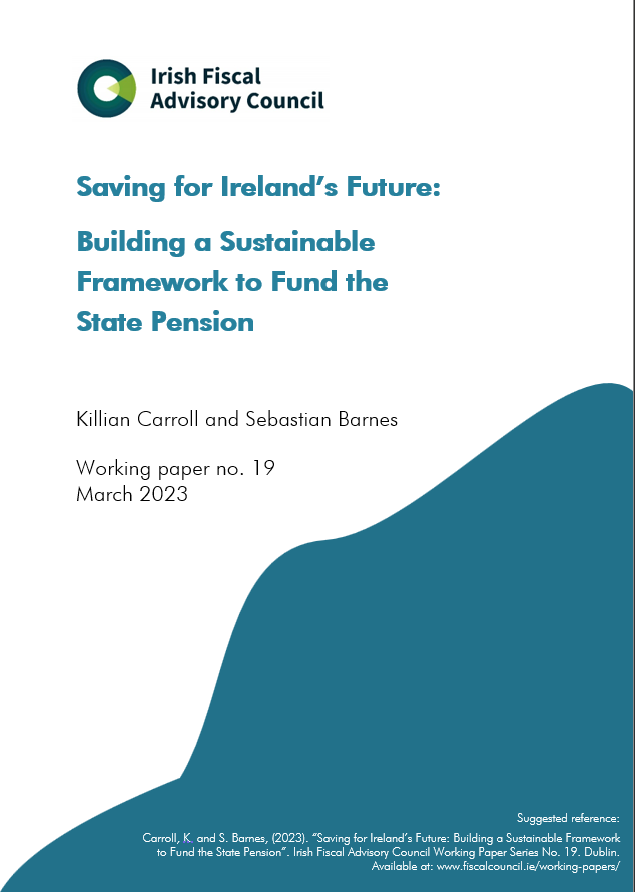Building a Sustainable Framework to Fund the State Pension
This paper puts forward an alternative approach to funding Ireland’s State Pension.[1]
Ireland’s population is ageing rapidly. This will put increasing pressures on the State Pension in the years to come. The current “pay-as-you-go” approach to funding the State Pension means that today’s PRSI contributions are broadly used to meet today’s pension payments.
Moving to a system where the PRSI rate is set at a constant rate to finance the pension system over the long term, as in Canada, rather than year-by-year would avoid the need for larger increases in PRSI rates in the future. This would be achieved by raising contributions from the baby boomers while they are working. This would reduce the burden on future taxpayers.
The paper goes on to present a model of how this system could work for Ireland.
What do the results suggest?
The paper shows that this funding approach would require the combined employee and employer’s PRSI rates to rise by about 3.5 percentage points over the current rate of 15%. This is around half the increase that would be required under proposals from the Pensions Commission. This increase would be almost halved again if the pension age is increased. This increase in PRSI rate would be even lower if “excess” corporation tax receipts were to be allocated to the fund to help finance future pensions, hence reducing the burden on future taxpayers.
This would lead to the accumulation of a Fund estimated at over 40% of GNI* in the second half of the century.
[1]The opinions expressed and arguments employed in this paper do not necessarily reflect the official views of the Fiscal Council.

